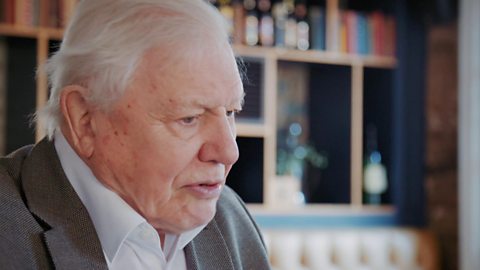Population Growth - 5 Things You Need To Know Before You Have Kids

In his latest documentary, presenter and environmental campaigner Chris Packham examines the impact our growing population is having on the planet.
Fearing for the world his stepdaughter will inherit, Chris investigates what we can do to limit the effect having a population of more than 7.7 billion has on the Earth. Is the answer simply to have fewer kids?
Here are a few things to consider.
1. A 2017 study suggested that having one fewer child could save 58 tonnes a year of CO2-equivalent emissions.
I never wanted to have children of my own – the idea of bringing new life into this world terrified meChris Packham
That compares to just 2.4 tonnes saved from living car-free for a year, or 1.6 tonnes by avoiding one transatlantic roundtrip flight.
Simply put, more people living in the world means more demand for food, water and energy. Living in close proximity in cities can be a more efficient use of space and resources, and it’s predicted that by 2050 nearly 70% of the human population will be living in urban areas. But cities have also been shown to lead to greater affluence for their inhabitants, which in turn can mean higher consumption levels. As the human population has grown, so too has our impact on the natural world, with huge losses in biodiversity, wildlife species and natural habitats.
2. The UN predicts that the world’s population is expected to continue growing to around 10 billion people by 2050.
This is partly because we’re all living longer – global life expectancy is expected to rise from 72 years to around 77 years – but the increase will also come because there are simply more of us being born. Around the world, every hour, it’s estimated that over 16 thousand babies are born.
Some population experts believe that that the human population will peak at 10 billion, and our numbers could then stabilise or even come down. But others suggest there could be a steady increase, with the population possibly reaching 11 or 12 billion people by the end of this century.
3. Most of the growth in population in the last thirty years is expected to come from Africa – but the average American, for example, currently has a much higher carbon footprint.
Nigeria, the continent’s most populous country, is expected to double in size, from 190 million people to almost 400 million, making it the third most populated nation on Earth, overtaking the United States. India will overtake China to claim the top spot by the mid-century, with both countries exceeding the 1 billion mark.
But it’s important to remember not all population growth is equal. According to the Global Carbon Project, in 2018 the average American’s annual carbon footprint was 28 times higher than the average Nigerian’s – with an American taking just 13 days to emit as much as their West African counterpart in a year.
4. Although the human population is growing, the rate of growth has been slowing, and the average birth rate across the world is actually falling.
In Britain we have an average of 1.7 babies per woman; in most countries around the world the birth rate is now below ‘replacement level fertility’, 2.1 children per woman. Many countries are worried about a ‘population inbalance’, with too many old people and not enough economically-active young people to support them – Japan for example has a rapidly-aging population, and an average birth rate of just 1.4 babies per woman.
Across the globe though the average birth rate is 2.4 – and that means that overall the human population is still continuing to grow at a striking rate. In the 1960s, there were just 3 billion people living on the Earth. In the 1800s, that figure was more like 1 billion.

Sir David Attenborough on human population growth
Chris and Sir David discuss what they believe is one of the pressing issues of our time.
5. Female education and access to contraception are two interventions that have been shown to bring the birth rate down.
Conversely, war, famine, natural disasters and even economic instability actually push the birth rate up, as people choose to have larger families in times of danger.
But even more important than the number of people living on the planet is the way those people live. If everyone on the planet had the same environmental footprint as the average Brit, it’s estimated that we’d need the resources of nearly 2 more Earths to support us. If everyone lived like the average American, it’s thought that we’d need nearly 4 more Earths.